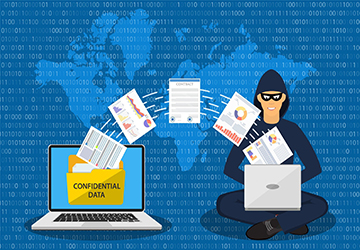Do you question the legitimacy of every email or website you encounter? In the modern digital era, the threat of phishing attacks online is ever-present.
It's not about if but when you might encounter a phishing attempt. The consequences can range from identity theft to financial loss, leaving you vulnerable and violated.
We understand the anxiety these scams can cause, and we're here to help you navigate the online world safely.
We want to address your concerns, ease your worries, and empower you with the knowledge and tools to protect yourself from phishing scams.
Check out these six crucial methods to defend against phishing threats. Let's get started!

6 Strategies to Defend Against Phishing Scams
Being duped by a phishing scam can lead to financial setbacks, including unexpected transactions and empty bank accounts. Recovering stolen funds can be challenging and time-consuming.
1.Stay Vigilant and Verify
Phishing attacks often begin with misleading emails or texts that entice you to click harmful links or share personal data.
Phishing attackers are cunning, and their messages may appear convincing. However, by keeping your guard up, you can thwart their attempts.
To safeguard yourself, it's essential to stay vigilant and follow these steps:
How to Stay Vigilant:
● Always check the sender's email address for legitimacy. Be wary of slight misspellings or unusual domains.
● Contact the sender directly through trusted means (phone or email) to verify any unusual requests for sensitive information.
● Implement 2-factor authentication.
Training yourself to spot phishing attempts is an ongoing process. Never click on attachments or download files from unknown sources.
2.Educate Yourself and Others
Educating yourself and those around you can make a substantial difference in your online safety. Understanding the tactics and techniques employed by phishing scammers is crucial to avoiding their traps.
Empower yourself and your community to recognize and respond to phishing attempts effectively.
How to Educate Yourself:
● Keep up-to-date with the latest phishing trends and tactics.
● Consider taking online courses or workshops on cybersecurity.
● Share educational resources with friends and family to help protect them.
Encourage open communication about potential threats with your peers. Regularly discuss common phishing warning signs. Teach others to verify information before sharing or taking action.
3.Use Reliable Security Software
Investing in reliable security software is like having a vigilant guardian for your digital life. Here's why it's crucial:
Phishing attacks can happen to anyone, but having robust security software can significantly reduce your vulnerability.
Enjoy peace of mind knowing your devices are protected against malware, phishing, and other online threats.
How to Make the Most of Security Software:
● Opt for reputable antivirus and anti-phishing software.
● Ensure your security software is always up-to-date.
● Use firewalls and email filters to block suspicious content.
Do your research and read reviews before selecting security software. Invest in a comprehensive security suite for complete protection. Security software should work seamlessly in the background.
4.Enable Multi-Factor Authentication (MFA)
It strengthens security by mandating multiple verification methods, making it more challenging for hackers to breach your accounts.
MFA may require additional time during login, but the added security is worth it.
Always keep backup authentication methods if you lose access to your primary one.

How to Enable MFA:
● Visit the security settings of your online accounts (email, social media, banking) and enable MFA.
● Use methods (e.g., Google Authenticator) or hardware tokens.
● Follow the provided instructions to set up MFA for each account.
Implementing Multi-Factor Authentication significantly reduces the risk of phishing scammers gaining access to your accounts, even if they have your password.
5.Be Cautious on Social Media
Phishers often use social media platforms to gather information about potential victims. Being cautious on social media is crucial. Protect your personal information and reduce the chances of falling victim to social engineering attacks.
Be cautious: social media details can aid targeted scam attempts.
How to Be Cautious on Social Media:
● Frequently check and modify your social media privacy settings.
● Avoid sharing sensitive personal information like your home address or phone number.
● Don't click on suspicious links or open unsolicited attachments sent through social media messages.
Cybercriminals can impersonate friends or family members, so verify unusual requests. Regularly audit your social media accounts for any suspicious activity.
6.Report Phishing Attempts
Reporting phishing attempts is an intelligent way to guard yourself and the community against fraud. Contribute to the fight against cybercrime and help authorities take action against scammers.
Reporting phishing attempts can help prevent others from falling victim. Keep a record of the phishing attempt, including email addresses and URLs, to provide as much detail as possible.
How to Report Phishing Attempts:
● If you get a suspicious email, send it to APWG at [email protected] or your email service.
● Use tools for reporting phishing. Use them to report suspicious websites.
● If you believe you've been a phishing scam victim, contact your local law enforcement agency or cybercrime reporting organization.
By reporting phishing attempts, you protect yourself and play a part in the collective effort to combat cybercrime and make the internet a safer place.
Conclusion
Phishing scams are a persistent threat in our digital age, but you don't have to live in fear. By following these tips, you can empower yourself to navigate the online world safely and confidently.
By implementing these ways, you can make your online experience safer and more secure.
Remember, caution and knowledge go a long way in protecting yourself from phishing scams. Stay safe out there!


